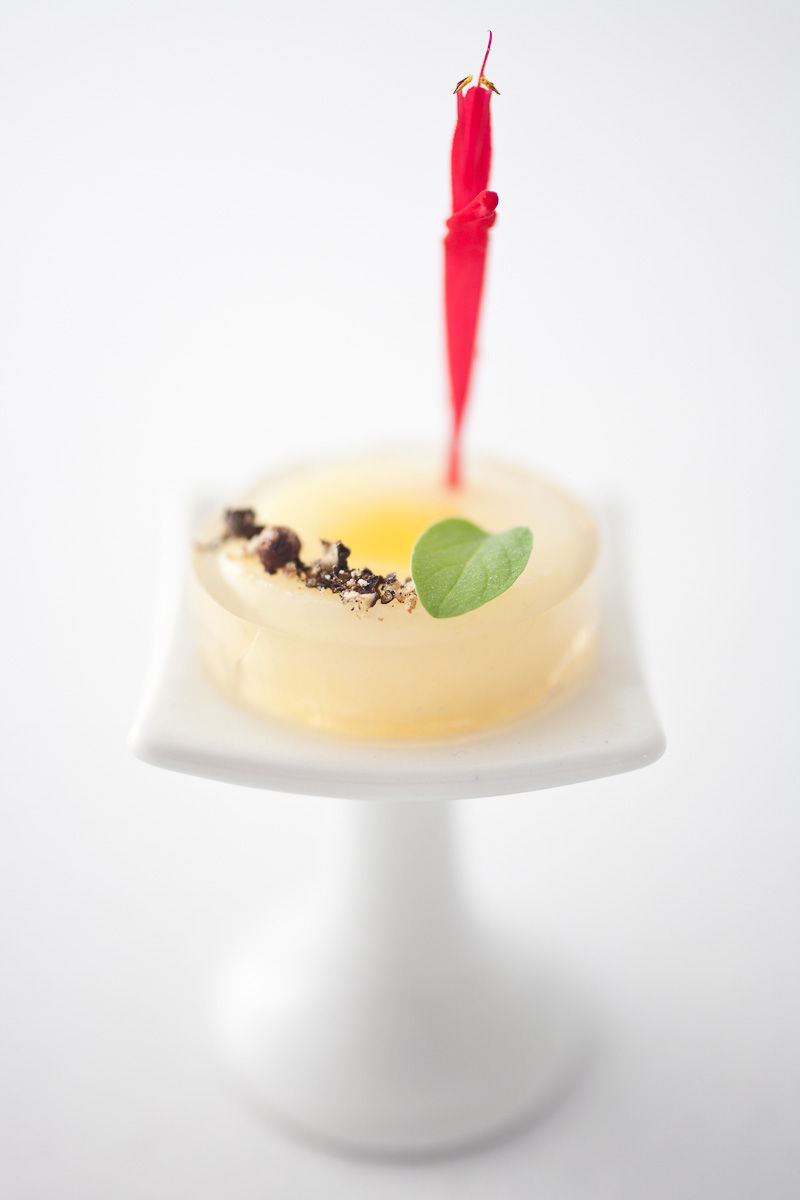
One of the things I love the most about the Bay Area is our proximity to wine country. I’m always excited to take a day trip up to Sonoma or Napa for a day of gentle boozing, good food, and great scenery. There’s a definable point along the 12 leading into the valleys where I can catch the scent of roadside eucalyptus groves; it’s faint and subtle and it encourages me to breathe deeply to try to catch and hold as much of it as I can. As we press closer, the eucalyptus mixes with the scent of ‘wine country’. It’s a mixture of oak, fruit, olives, and earth that I haven’t noticed anywhere outside an area of vineyards. The mixture of all of these scents both excites and relaxes me.
In this small bite, a hollowed half-sphere of pear encased in eucalyptus gel is filled with fragrant fresh olive oil, then garnished with coarsely-crushed black peppercorns and a small leaf of zuta levana. In one bite, it is Highway 12…it’s a transition from one place to another, both in spirit and literally, as it’s meant to be a small, gentle palette cleanser in Alinea’s menu tour.
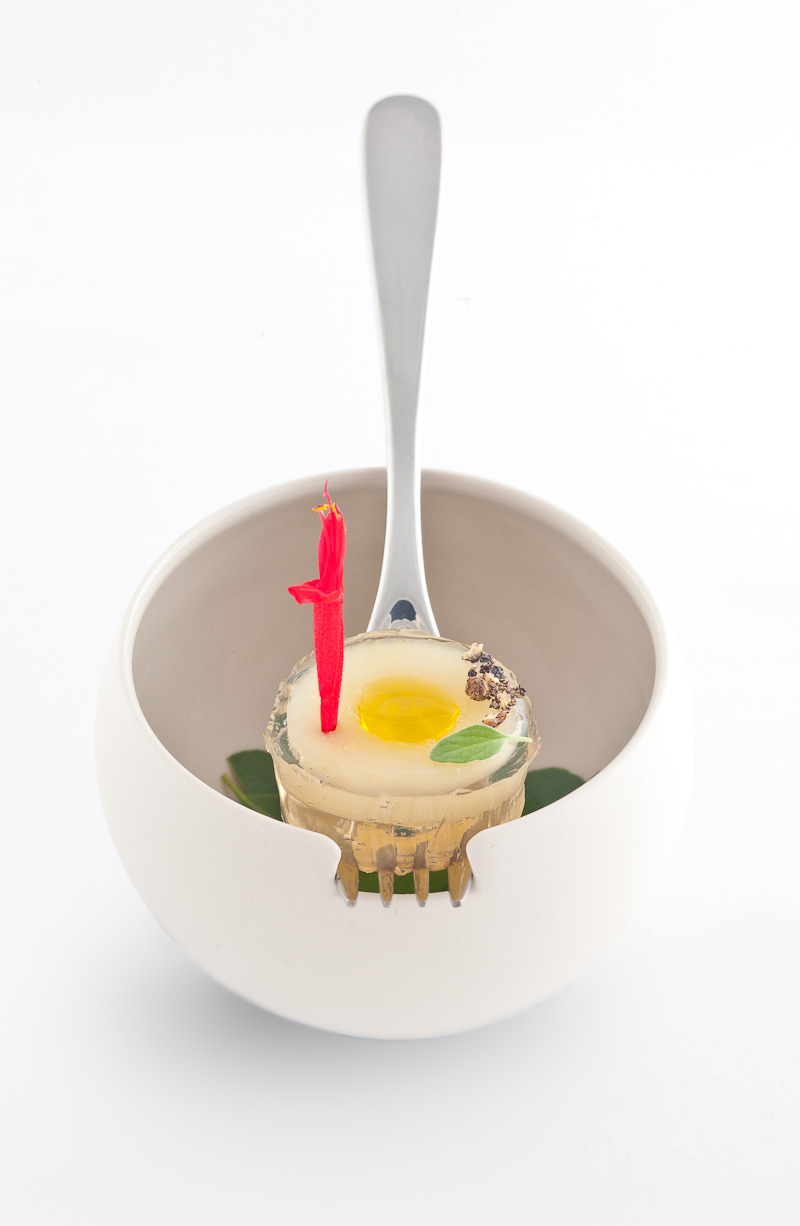
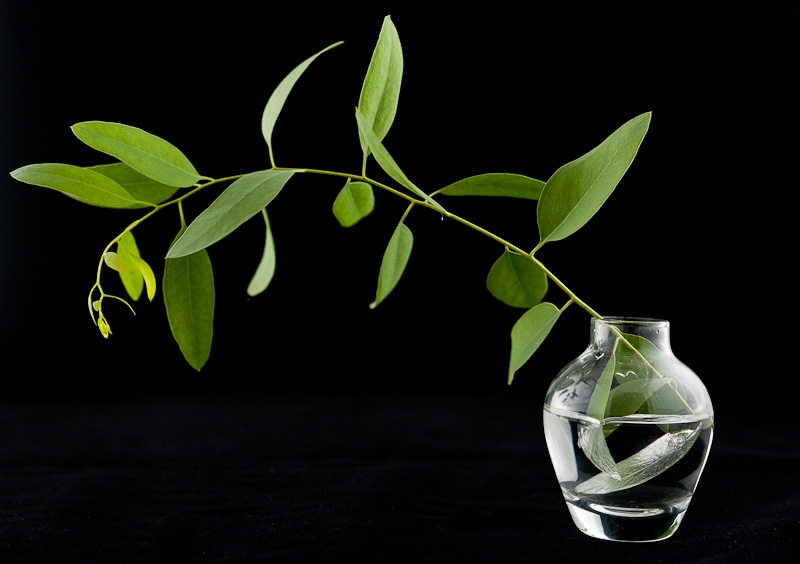
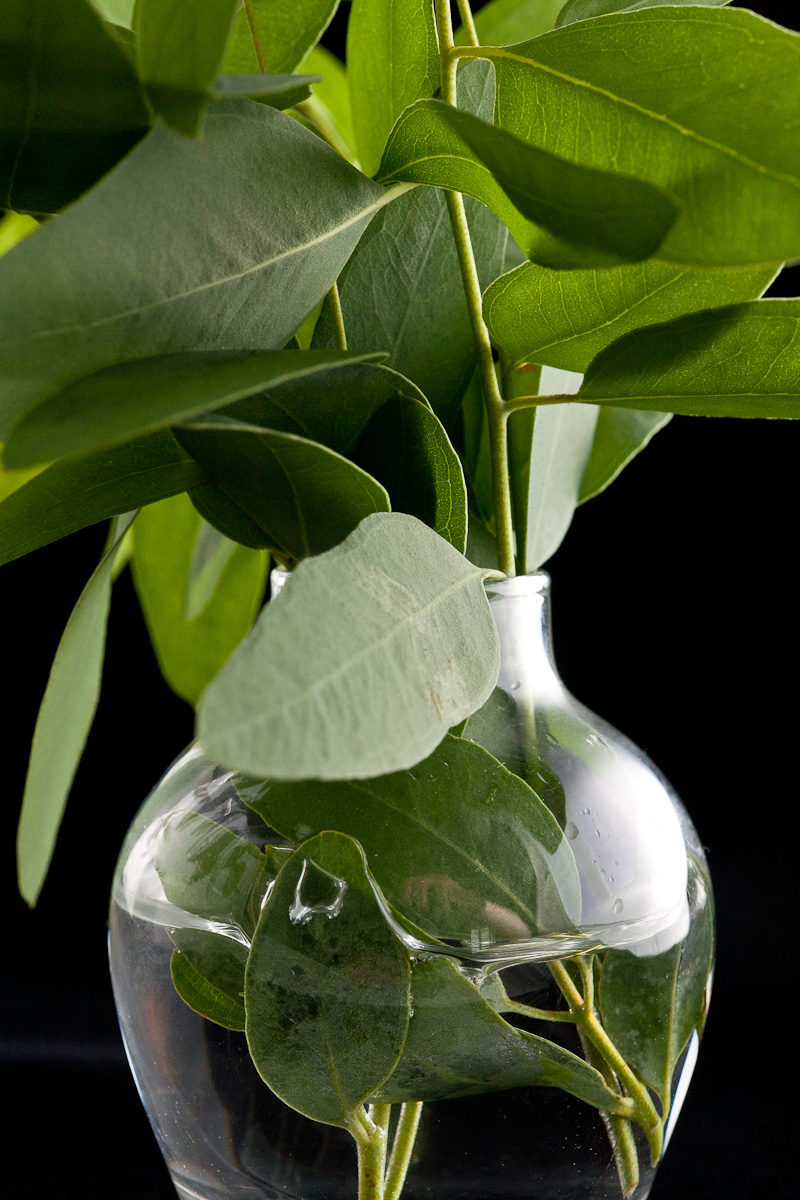
I started with the eucalyptus gel. Last weekend, Sarah and I took a walk around our neighborhood and came across a eucalyptus tree just a few blocks from our apartment. I felt silly not noticing it before; I could have used it for the Lamb dish instead of buying eucalyptus from a local florist. The tree had lots of new growth hanging low, which I thought would be perfect for this. So yesterday I went back with some clippers and clipped a few young boughs.
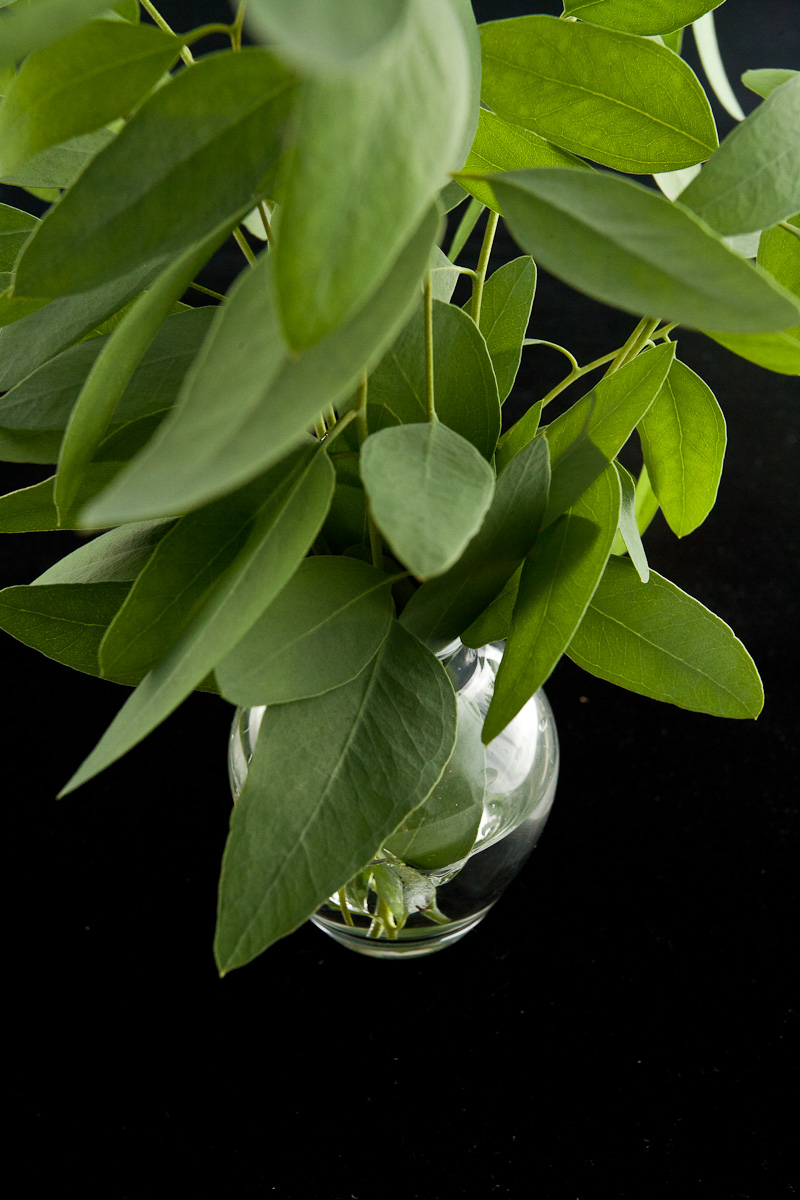
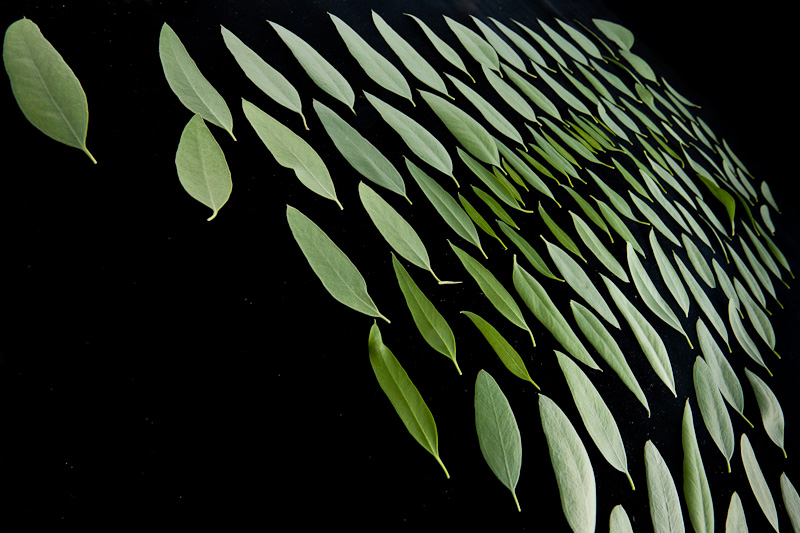
I came back home and picked off 20 grams of the best leaves, then mixed them in a solution of water, salt, and sugar. I brought this to a boil, then let it steep for a while. The oils from the very young leaves were sweet and had nice subtle notes, in contrast to the ‘cough drop’ smell I got from the florist-bought (ostensibly more mature) boughs a few months back.
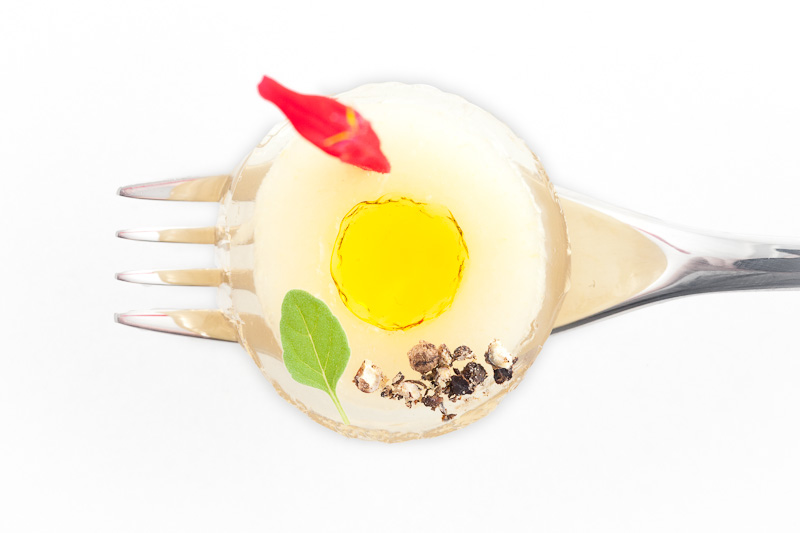
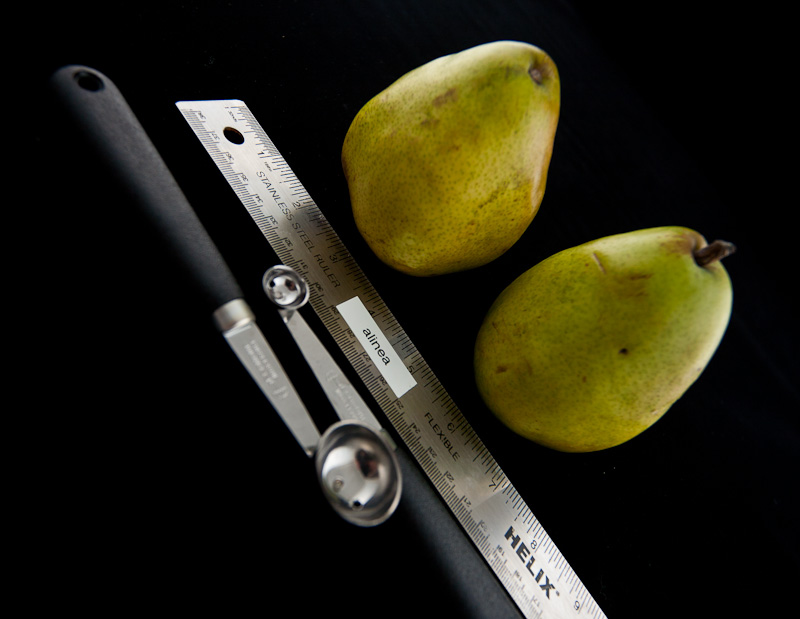
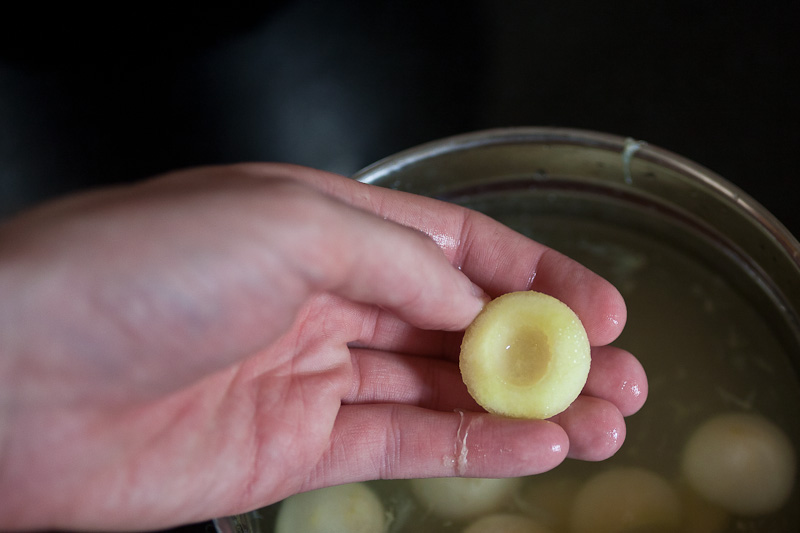
While the eucalyptus was steeping, I got to work with the pears. Using a large parisienne scoop, I scooped out several half-spheres of the pear, then used a smaller scoop to make a hollow in the center of each, resulting in a little ‘pear bowl’. As I worked, I kept the spheres floating in a solution of water and lemon juice, to keep them from oxidizing. After this, I cooked the pear spheres in a white wine from Ravenswood in Sonoma; dry white wines are often said to have ‘pear-like notes’, and the resulting cooked spheres tasted lovely. The oaky notes in the wine complimented and sweetened the pear, while punching up its natural flavor.
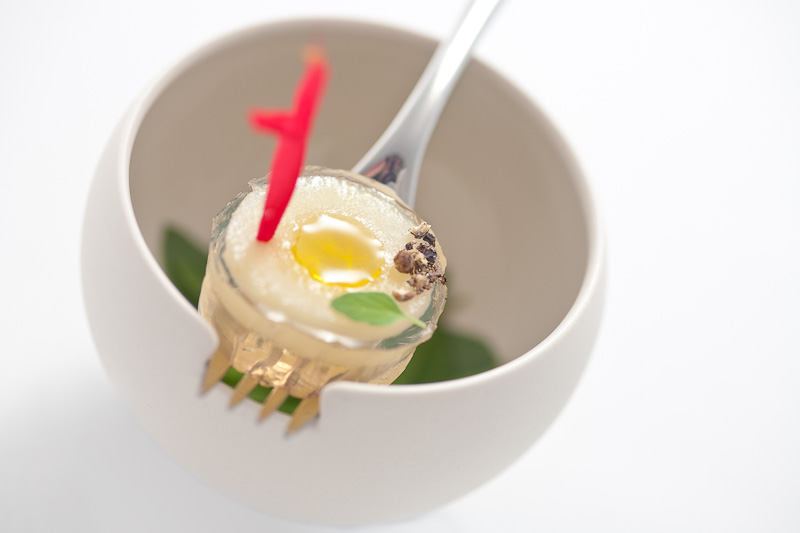
Once the pear spheres are made, I set them in a small container and filled them to their tops with the eucalyptus liquid and some gelatin, then let this set in the fridge. After the gel set, I used a round cookie cutter to pull out plugs of the gel-encased spheres. The bowls are filled with olive oil; I used some B.R. Cohn oil because Sarah and I did a tasting of their oils the last time we were in Sonoma and really enjoyed them.
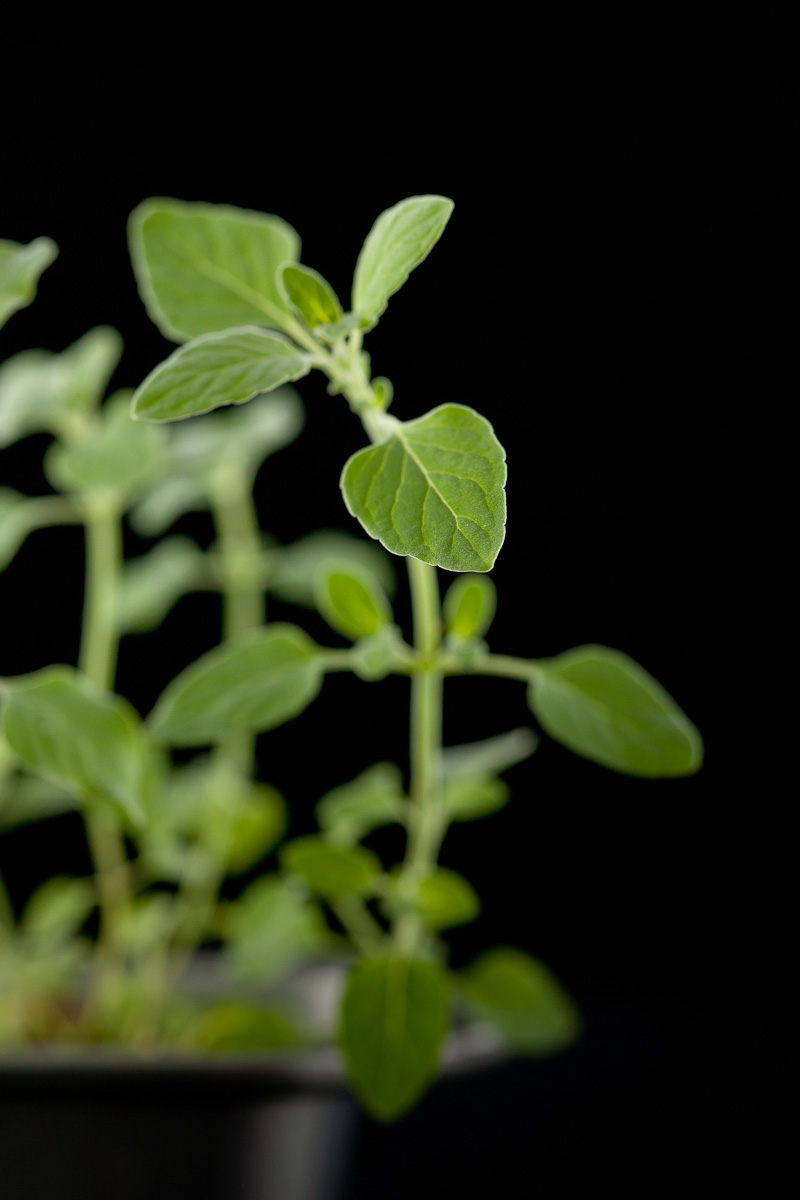
I still have lots of Zuta Levana growing, which is part of why I picked this dish to try next. I wanted to use it while it’s still young. In the Passion Fruit dish, the menthol-y taste of the herb was weird for me, but in this one it accents the eucalyptus perfectly, especially since my eucalyptus gel was a bit subtle. I’m also garnishing the dish here with a flower from a pineapple sage plant that I’ve been growing and that’s just started to flower. The pineapple taste is subtle enough to be almost unnoticeable, but I couldn’t NOT use that flower. I mean come on, look at it, right?
All together, I found the spirit of this little thing really beautiful; it’s subtle and the flavors can all easily be picked apart. These kinds of dishes–where I can get everything in one bite and can pick apart all the ingredients–are my favorite to make and to eat. This is straight-up the experience of being about 5 miles outside of Sonoma and breathing deeply. I love the concept.
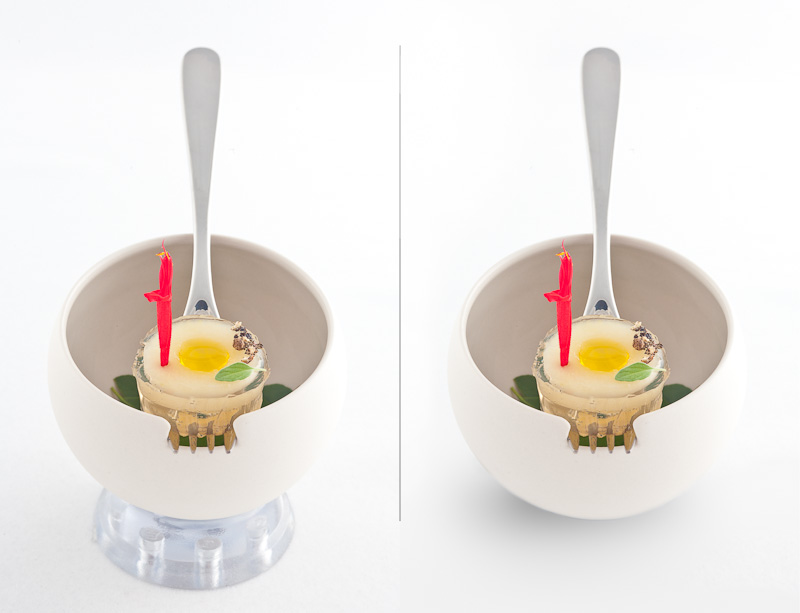
I wanted to try plating a portion of this one using this bowl, so that I could include some leaves from the young eucalyptus just to cast a bit more scent on things; plus I thought it looked pretty. The bowl, however, doesn’t have a flat bottom; you have to hold it to eat from it, otherwise it just rolls over and dumps everything on the table. So I grabbed a small clear silicone floor protector; it’s the kind of thing you slip under a couch leg to keep it from scratching your floors or scooting around. It had enough grip to hold the bowl’s weight in place, but it wasn’t really very pretty so I had to get rid of it in the photos. I replaced it with a soft shadow that matches the soft lighting on everything. TOTALLY FAKE, YOU GUYS.
I also mentioned last week that my garden is starting to make cool stuff. I’m specifically waiting for heirloom tomatos to come into season, for which I’m going to use some baby cucumbers with the blossoms attached as a garnish. Meanwhile, however, the cucumbers haven’t stayed babies; yesterday I picked these guys right from my very own plants:
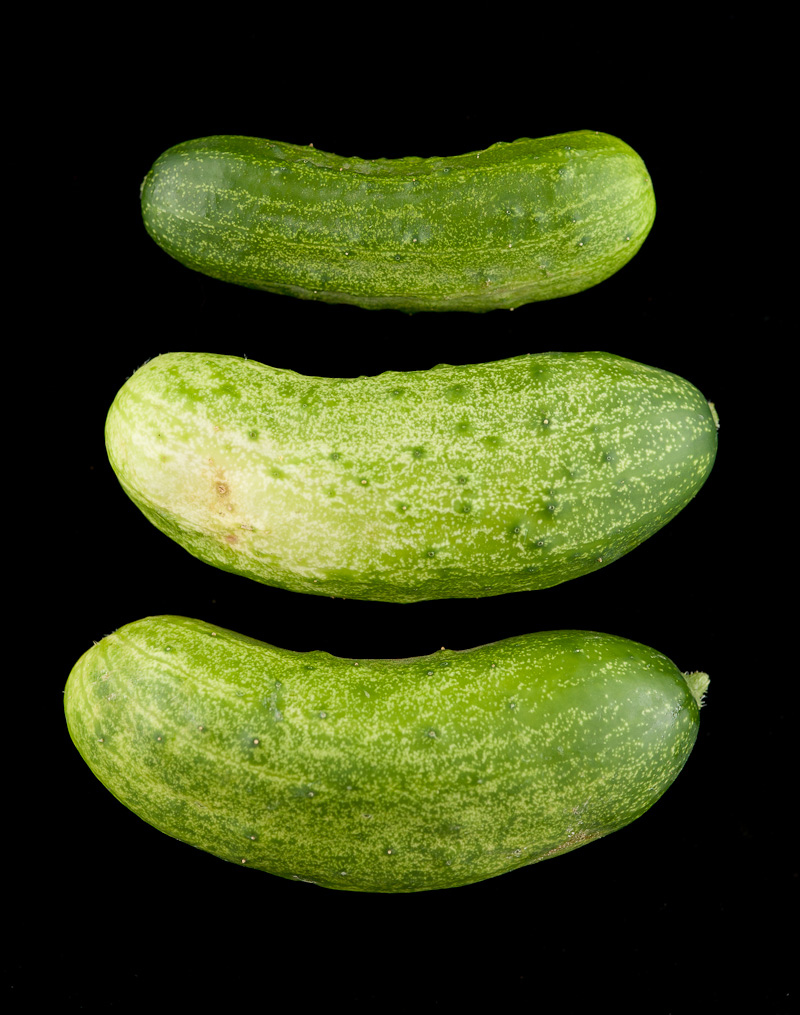
Totally legit, right?? I was excited too. I love the idea of making my own pickles with them, so I looked up a few recipes. Turns out there are two main ways to ‘pickle’ something. The fast-and-noisy way is to soak them in vinegar for a while. This results in pickles that taste like vinegar though. The other way is to ferment them! Given my recent jag of making my own beer, the idea of fermenting other things is obviously appealing. The idea is pretty simple: soak the pickles in a brine for about a week. Naturally-occurring bacteria in the skin of the cucumber cause an anaerobic fermentation process, which turns the pickles ‘sour/salty’, not so much ‘vinegary’. You can only do this with freshly-harvested cucumbers though; commercially-packaged ones have most of this bacteria killed/washed off during the cleaning process.
I wanted to make dill pickles, but because I like overdoing things, I also wanted to try using some other stuff in my garden for flavor. The idea of lavender-dill pickles sounded pretty good to me, so that’s what I did. I also included a bit of lemon verbena, pineapple sage, rosemary, and thyme, along with more-usual ingredients like black peppercorns, bay, dill seed, clove, and red pepper flakes.
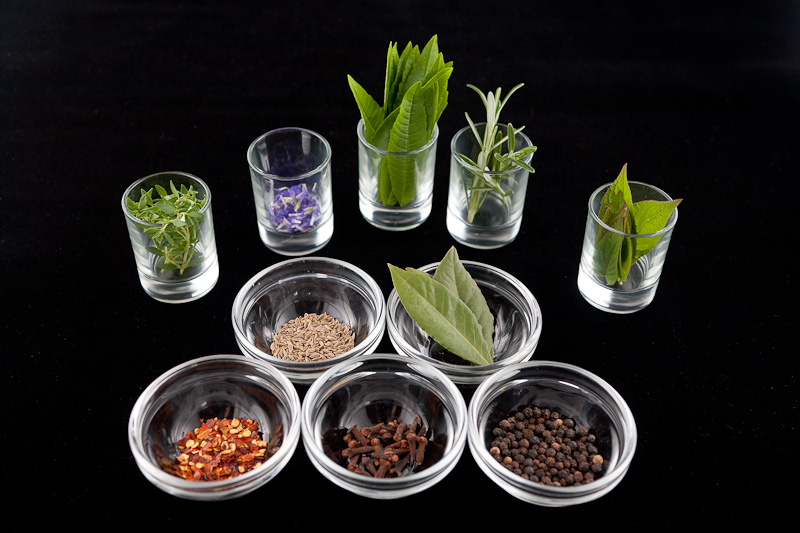
I boiled some water with salt to make a sterile brine, cooled it, then poured it over my sliced cucumbers with the spices.
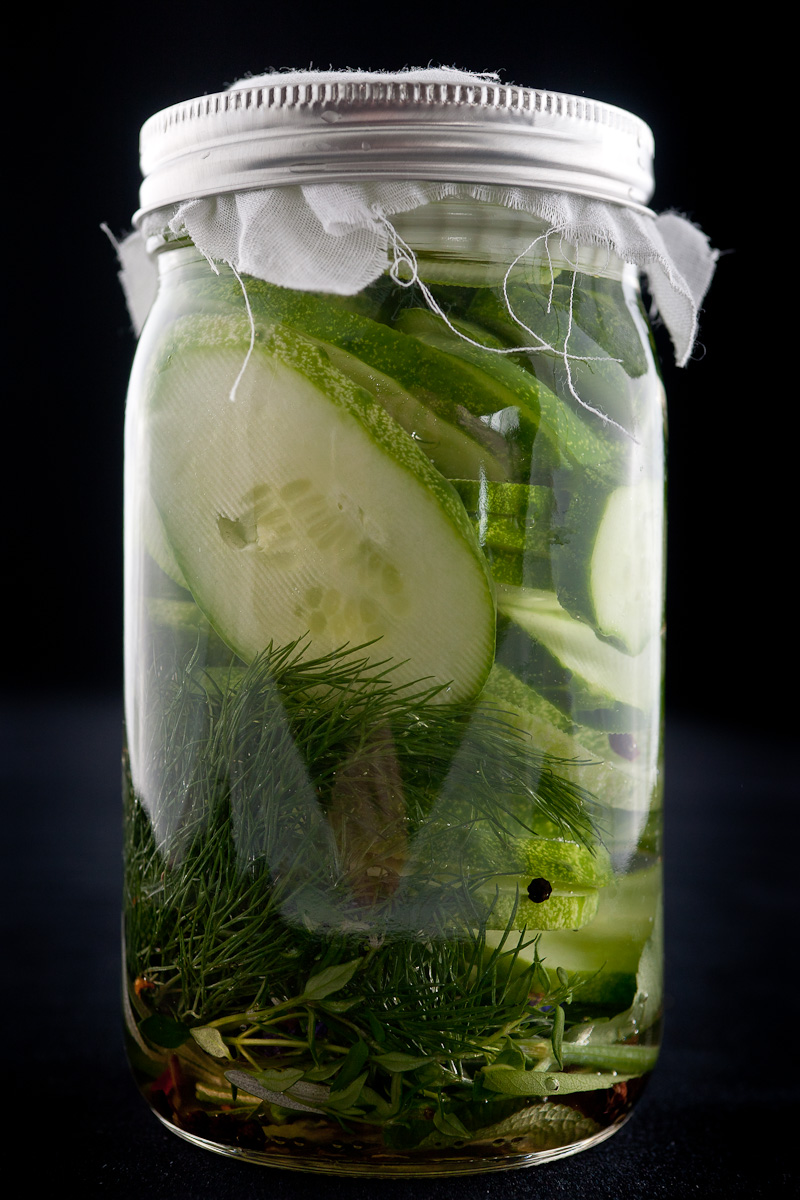
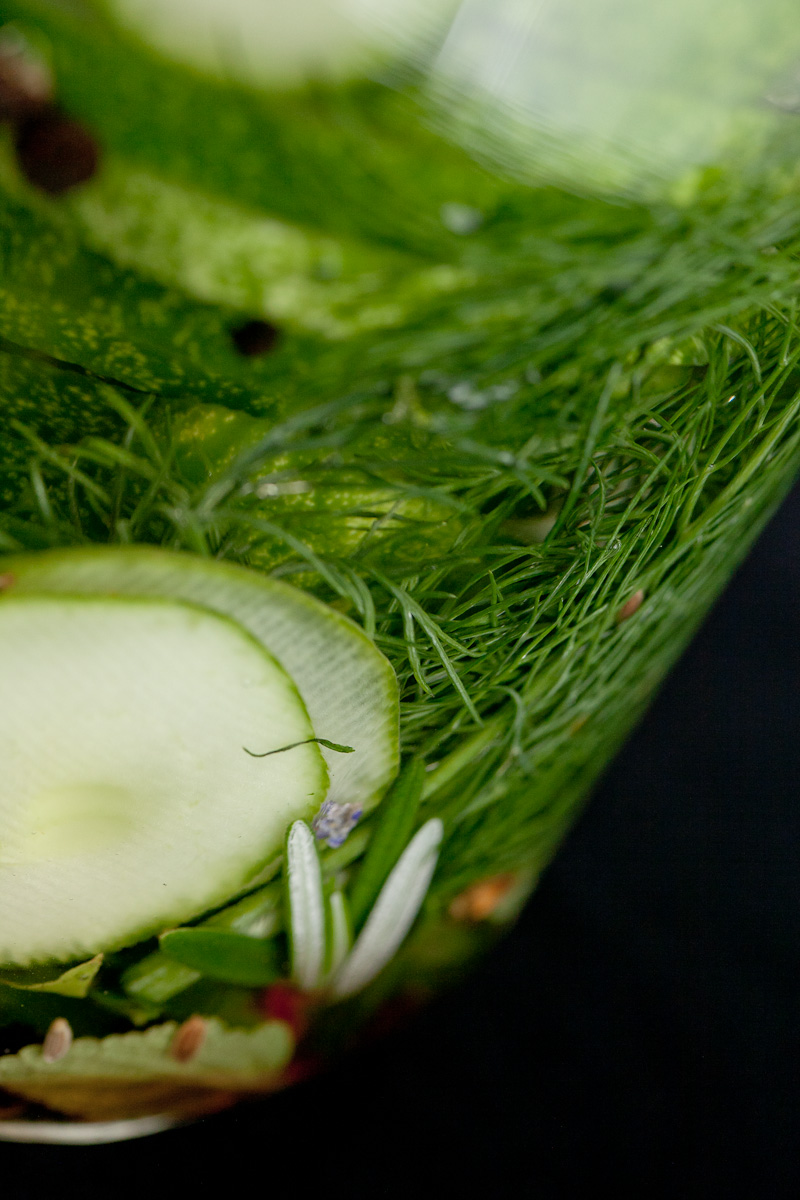
I’ll let you know in a week how well (or not) this worked.
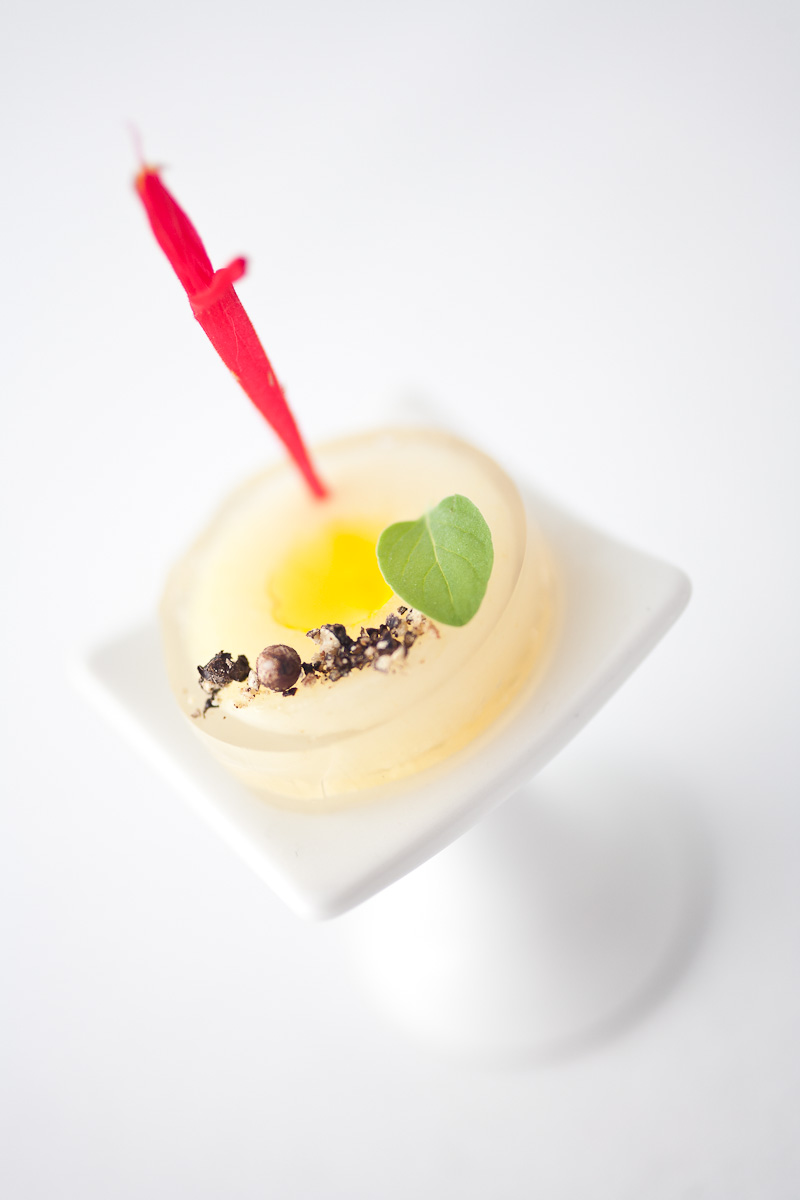
Hi Allen! Your dishes continue to look amazing. I am starting to make the sassafras dish, any advice? I am a bit paralyzed and not sure where to start. Can I scale down the recipe?
One other question, for the corn, coconut one, it says to layer one first to 1 inch thick, freeze, then layer the other one. Then it says to cut them 1/2″ squares, my question is, they would turn out to be 1/2″ x 1/2″ x 2″? For the stabilizer, can I used stabi sorbet or stabi 3000?
Thank you
Hi Norma;
Re: the size dimensions, in cases like this I’ve found the alinea cookbook to be inconsistent/unclear in some cases and wrong in others. I, like you seem to, usually have a gnawing “Hmm…this doesn’t seem right” feeling. More and more frequently I’ve learned to trust that instinct and use my common sense to do what I think should be done (or, what I WANT to do for myself). So, in this case, the book shows a cube, and I like the tidiness and look of a cube rather than the elongated rectangle you noticed that following the instructions directly would yield, so I just cut it down to about 1/2″ square or so. Just enough to make it look tidy and neat. Clearly the flavor isn’t impacted at all. You can see from my post I also chose to try making a circle cutout as well, just to play. Trusting my own instincts has been a 2.5-year-long effort and is ongoing. 🙂
Re: the stabilizer, I’m still learning my way around all of these, so again I’m using what I think is common sense, not really anything beyond that. “Stabi sorbet” seems to imply it’s to be used in…well…sorbet, and Stabi 3000, as mentioned in the description of that product, seems meant to be used in ice creams. So I’ve just been selecting accordingly, and playing with the ratios as best I know how. I’m not confident at all I’m ‘doing it right’, but on the other hand, I’m not dead yet so I’m clearly not doing anything crazily wrong either. 🙂
Re: where to start, usually I read the entire recipe for something I’m going to make, then reread and try to find the things that seem like they’ll stay stable the longest. Freezing something buys me days of time, cutting produce up and storing it in the fridge under damp paper towels buys me hours. So I usually start with the thing I think will stay stable the longest, and work my way towards the things that seem more immediate.
Re: scaling stuff down, I don’t have the cookbook in front of me right at the moment so I couldn’t say for sure. Again, I look for steps involving very small amounts of hydrocolloids (usually can’t be scaled down because my scale isn’t accurate enough), steps involving blending (usually can’t be scaled down because it won’t blend properly), etc. I also usually default to ‘not scaling down’ unless I’m confident it can be. This confidence, again, has been something I’ve been learning since starting this project, and I’ve had many, many, many missteps along the way.
Cheers! Can’t wait to hear how they both turn out for you!
–a
Thank you so much! By the way, did you check out the Fat Duck cookbook? Anyhow, I will send you some pictures of one dish I made (an ice cream on fire that wouldn’t melt). Thank you very much for taking the time to reply to my questions. I truly appreciate it.